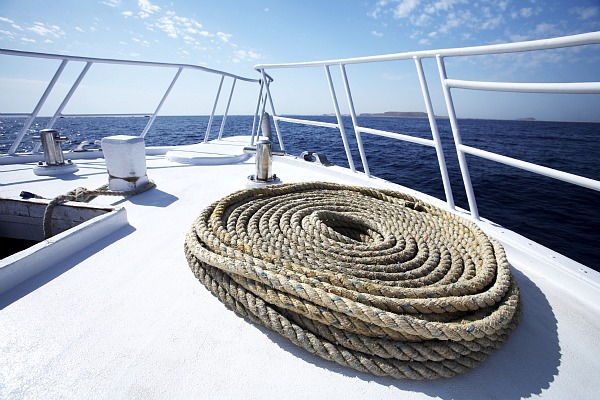Setting Up Anchor Systems Boating Articles

Setting up Anchor Systems
Boat Maintenance & Safety
Reviewed: November
Author: Adam Robinson
Boating Review:
Setting up your anchor with a trip system can help retrieve it from difficult snags.
Anchor trip system – Boating Article by Modern Boating
“Retrieving anchors from difficult snags – Want to break free?”
Weighing an anchor snagged on an underwater obstruction can be made easier by fitting a trip system. The majority of anchors, including grapnel, plough, CQR and Danforth are designed with a ring on each end of the shank. Commonly, the anchor chain is shackled directly to the top end of the shank, ignoring the attachment point at the opposite end of the anchor. This approach works until the anchor is caught fast on an obstruction.
Instead, consider shackling your anchor chain to the bottom end of your anchor, nearest the flukes. Shackles should be ‘moused’ or secured with non-corroding wire cable, to prevent them loosening under constant vibration (pic 1). This will also prevent having to over-tighten when installing, a factor which makes removal nearly impossible later.
Attach the anchor chain to the top end of the shank by wire rope and crimps (pic 2), cable ties (pic 3), rope or any practical lashing. The anchor will now function normally (pic 4). When the anchor is stuck fast on the seabed, have a crew member take two turns of the anchor rode around a bow bollard, then motor slowly over the top of the anchor. The crew member should hold onto the anchor rode and allow it to slip if the bow is pulled under excessively.
This vertical pull will eventually break the material securing the chain to the top of the shank, allowing the anchor to be pulled forward, free from the obstruction (pic 5).
Regarding lashing materials, cable ties are quick and easy, but be sure to use black UV resistant types or they will soon turn brittle. Several may be required to provide sufficient strength. Ensure sufficient replacements of your chosen material are on board.
A word of caution: Skippers should be aware of submarine cables when anchoring. Their locations are detailed on charts. If you suspect your anchor has fouled on such a cable, a sensible approach would be to cut your losses, discard the ground tackle and advise the relevant marine authorities.
Anchor picture captions:
- Mousing’ the D shackle pin with a crimped or twisted wire will prevent anchor loss by the shackle pin working loose.
- Securing the chain to the anchor with a strong crimped wire or similar material will enable the trip system to work under vertical load.
- A faster alternative to wire are cable ties. Be prepared to use plenty and replace them regularly as they wear.
- Functioning normally, this CQR anchor is being pulled correctly from the top of the shank. Should it hold fast, additional force is applied…
- And ‘tripped’ by the broken wire or cable tie, the anchor can be pulled freely forward by the motion of the boat and the extra force.


